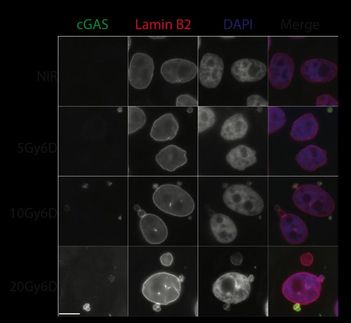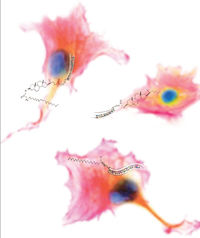DNA-coated nanotubes help kill tumors without harm to surrounding tissue
Advertisement
Researchers at Wake Forest University School of medicine have destroyed prostate cancer tumors in mice by injecting them with specially-coated, miniscule carbon tubes and then superheating the tubes with a brief zap of a laser. The procedure, which used DNA-encased, multi-walled carbon nanotubes (MWCNTs) to treat human prostate cancer tumors in mice, left only a small burn on the skin that healed within days.
"That we could eradicate the tumor mass and not harm the tissue is truly amazing," said principal investigator William H. Gmeiner, Ph.D., a professor of cancer biology at the School of Medicine.
The researchers envision using the particles not only to kill tumors through heating, but also to target cancer drugs to the diseased area in patients.
"The long-term goal in the project is to be able to use the DNA-encased MWCNTs in multi-modality fashion for a variety of types of tumors," Gmeiner said.
For this study, researchers used MWCNTs encased with DNA, which prevented them from bunching up in the tumor, allowing them to heat more efficiently at a lower level of radiation and leaving the surrounding tissue virtually unharmed.
With funding from the National Cancer Institute and the North Carolina Biotechnology Center, researchers grew 24 prostate cancer tumors in 12 mice. They then separated the mice into groups receiving treatment with DNA-encased MWCNTs and laser, laser only, non-DNA-encased MWCNTs only, or no treatment.
The eight tumors treated with a single injection of DNA-encased MWCNTs and zapped with a 70-second burst from a three-watt laser were gone within six days after treatment. While a minor surface burn appeared at the site of laser treatment, it healed within a few days with antibiotic ointment, Gmeiner said. The tumors in the other treatment groups showed no distinguishable reduction.
Using the DNA-encased MWCNTs increased heat production two- to threefold – allowing researchers to use fewer nanotubes and a less powerful laser to kill tumors – an important consideration as scientists determine potential issues with the toxicity of nanotubes, since they remain in the body after treatment, Gmeiner said.
Before treatment with MWCNTs can be tested in humans, studies need to be done to test the toxicity and safety, looking to see if the treatment causes any changes to organs over time, as well as the pharmacology of the treatment, to see what happens to the nanotubes, which are synthetic materials, over time.

























































